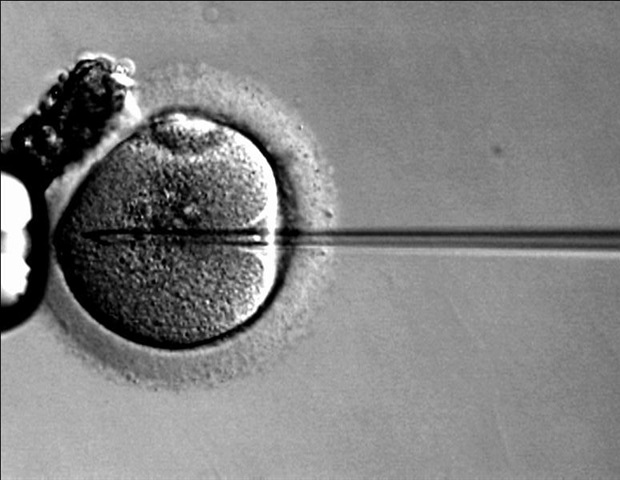Gene Therapy Market Size, Growth & Forecast, 2033

Global Gene Therapy Market Size
The size of the global gene therapy market was worth USD 9 billion in 2024. The global market is anticipated to grow at a CAGR of 30.1% from 2025 to 2033 and be worth USD 96.11 billion by 2033 from USD 11.71 billion in 2025.
Gene therapy is an experimental method for treating or preventing illness by using genes. Gene therapies usually involve inserting a functional copy of a defective gene into the patient’s cells. Genes are made up of DNA that contains the instructions for making proteins needed to function in the human body properly. Gene therapy is a treatment method that involves injecting DNA into a patient to cure genetic disorders. The new DNA has a working gene that can cure the symptoms of a disease that causes mutations. Repairing, repressing, and deleting defective genes are all part of gene therapy. Any neurological illnesses, such as muscular dystrophy and cystic fibrosis, and some hereditary conditions, tumors, and viral infections, may recover from this therapy. Since it helps correct the condition at the root DNA, this form of treatment is often referred to as a single-dose remedy. Several gene therapies for basic (single defect) and complicated genetic diseases have been developed over time. To date, ten gene therapies have been licensed (recent examples include Zolgensma, ZyntegloTM, and Collategene), and over a thousand product candidates are being tested in clinical trials around the world.
MARKET DRIVERS
The rapid R&D activities in this market are expected to lead to the commercialization of the global gene therapy market and further increase gene therapy popularity. Gene therapy is an essential area of the pharmaceutical industry and will grow in market share in the future at a fast pace. Significant developments in molecular biology and cellular biology worldwide are primarily driving the growth of the global gene therapy market. The increase in population has led to a rise in chronic diseases, which is estimated to impact the market positively. The growing cases of cancer have fuelled the research and development being done for the market. The availability of reimbursements is another significant factor accelerating the market’s growth rate.
The development of technology due to increasing government initiatives has made it possible to commercialize the gene therapy market, so that more and more private firms are entering the market. Collaborating with private firms to develop gene therapy technology will increase the growth of the global gene therapy market during the forecast period. Gene therapy is also less risky than traditional methods, according to historical data.
The growth of the gene therapy market is regulated for various reasons, including the rapid use of synthetically engineered genes to cure different disorders, the ability to devise customized medicine, and an increase in gene therapy research and development, among others, fewer doses of medicines. It is a one-time treatment, and these factors are likely to create significant growth opportunities for the gene therapy market shortly. An increase in support and spending for gene therapy advances is projected to create substantial business gains for the companies operating in this space. For Instance, REGENXBIO, Inc. and Ultragenyx Pharmaceutical, Inc. partnered in March 2020 to use the NAV technology platform. The latter organization obtained a worldwide license to REGENXBIO’s NAV AAV9 and AAV8 vectors to advance gene therapies for a rare metabolic disease as part of this collaboration.
MARKET RESTRAINTS
Lack of skilled professionals such as scientists and doctors, high cost of product development, stringent regulatory policies, side effects like unwanted immune responses, and concerns regarding the unethical use of gene therapy are the factors that could broadly impact the growth of the market of gene therapy in the coming years. Despite the rising prevalence of chronic diseases such as SMA and cancer, care remains prohibitively costly. The procedure is marketed as a single-dose therapy that corrects a hereditary deficiency in the patient’s body. According to Novartis AG, a single dose of Kymriah, a cancer treatment drug, costs USD 475,000. The same drug is priced at USD 306,000 in Japan. High cost associated with the treatment; the budget challenge has reduced the healthcare expenditure. All these factors are expected to hamper the market growth to a small extent.
The complications associated with gene therapy are a major challenge to overcome for this market to shine further. Unwanted immune system response, a gene cannot be easily injected directly into the cells, newly released viruses may be seen as intruders by your immune system, which can target them, by focusing on the infection of the wrong cells infects you, and you become infected, the possibility of tumor formation. Despite this therapeutic and commercial promise, cell and gene therapy researchers face challenges in many areas, including allowing patient access, controlling the supply chain and manufacturing processes, and building a healthcare provider network, as with any modern, revolutionary, transformative technology.
MARKET OPPORTUNITIES
The future of the gene therapy market appears promising. As more genetic treatments get FDA approvals, hospitals will be required to make decisions on increasing their financial support, therapy focus, and recruitment and infrastructure needs.
In the coming years, a focused business model holds immense growth potential for the market players since various locations will have unfamiliar conditions. An expertise-based site would provide a specific range of these therapies in particular therapeutic fields (for instance, just in neurology and ophthalmology). Further, finance-driven sites would enable genetic treatments based on if the reimbursement model accessible matches their maximum financial risk-taking ability, such as preferring a white-bagging technique to ensure healthy cashflows.
Another opportunity for expanding the market is the broader gene therapy center of excellence (COE) model. A few locations may be interested and capable of accommodating the larger quantity of these treatments and their related patient volumes. These COEs will emphasise building committed teams for genetic and cell therapy. Making more extensive infrastructure is the other aspect these COEs will have to focus on. Lastly, hospitals need to acclimatise to a hybrid reimbursement model to enable them to maintain a healthy cash flow to find a balance between increasing the volume of patients and generating profit.
MARKET CHALLENGES
One of the primary challenges hindering the expansion of the gene therapy market is an accurate delivery system for genetic material. It continues to represent a major obstruction in this field, including ensuring supply to the right location and transporting a heavier genetic load. So, for mass scale, the production process should be affordable and consistent or replicable, which necessitates a highly skilled workforce.
Forming a legal framework in the vicinity of a novel treatment is a lengthy process, and this applies equally to gene therapy, impeding the market growth rate. Safety regulations and efficiency conditions should be considered, which exerts a huge amount of pressure on legal or administrative establishments such as the FDA. Moreover, there is a fine balance between executing it correctly and executing it rapidly, so they can at the same time make sure of the patient’s safety and not defer or postpone therapy to those who require the most.
Apart from the market’s biggest problems, communication comes across as the least grave of the other challenges, although it is a current necessity.
REPORT COVERAGE
|
REPORT METRIC |
DETAILS |
|
Market Size Available |
2024 to 2033 |
|
Base Year |
2024 |
|
Forecast Period |
2025 to 2033 |
|
Segments Covered |
By Vector Type, Application, and Region |
|
Various Analyses Covered |
Global, Regional & Country Level Analysis, Segment-Level Analysis; DROC, PESTLE Analysis, Porter’s Five Forces Analysis, Competitive Landscape, Analyst Overview of Investment Opportunities |
|
Regions Covered |
North America, Europe, APAC, Latin America, Middle East & Africa |
|
Market Leader Profiled |
Biogen, Sarepta Therapeutics, Gilead Sciences, Inc., Amgen, Inc., Novartis AG, Orchard Therapeutics Plc, Spark Therapeutics, Inc., Molmed S.P.A., Anges, Inc., Bluebird Bio, Inc., Jazz Pharmaceuticals Plc, Dynavax Technologies, Human Stem Cells Institute, Sibiono Genetech Co., Ltd., etc. |
SEGMENTAL ANALYSIS
By Vector Type Insights
The viral vector had the largest market share in 2023 and is expected to grow reasonably during the forecast period. It is further divided into eight sub-segments. The key factor responsible for this increasing growth rate is the more accessible genetic modifications, such as Lentivirus and Adeno-Associated Virus (AAV) to deliver gene therapy drugs. With the high accuracy in delivering the gene to the region of interest, the demand for adeno-associated viruses (AAV) as a platform for gene therapy delivery is expected to increase during the forecast period. Lentivirus in the viral vector segment is expected to grow at the highest rate among its peers during the forecast period. The main reason for the high growth in companies that offer an exclusive Lentivector platform to key gene therapy developers.
- According to a study published in the Journal of Nanobiotechnology, genetic vectors usually comprise non-viral and viral vectors. At present, around 70 per cent of clinical trials of gene therapy use viral vectors, which include adeno-associated viruses, adenoviruses, lentiviruses, and retroviruses. This can be due to their extraordinary infectivity, which vectors based on the virus generally present outstanding abilities of genetic transfection.
Despite that, clinical protection of these vectors has been criticised owing to their tendency to arouse immunogenic reactions and provoke transgene zero point or insertion mutations. Besides, this type holds various limitations, involving the inability to administer them to patients multiple times, complex preparation processes, challenges in delivering large genes, and restricted genetic loading capacity.
The non-viral sector is expected to grow at the fastest rate during the forecast period. Advancements in physicochemical approaches will drive the growth of this subsegment.
These approaches include physical methods and chemical methods of the non-viral vector for gene therapies used during the clinical trials and treatment process.
By Application Insights
Based on the application, the oncological disorders segment contributed the highest revenue in 2023 and is expected to grow at a healthy rate during the forecast period. The main reason is the increasing number of cases of cancer around the world. The government has now contributed to the development by increasing regulatory approval of gene therapy for cancer. The improvement in technology is the key factor that will drive growth.
- As per a 2024 study released in Frontiers, by incorporating the advances comprising CRISPR-Cas9 gene editing, CAR-T cell therapy, oncolytic virotherapy, gene silencing, and gene replacement
The cardiovascular disease sub-segment is expected to grow at the highest rate during the forecast period. The growing cases of cardiovascular diseases due to the prevalence of unhealthy lifestyles are the main reasons for growth. Improvement in healthcare facilities and rising awareness among people have positively impacted the development of the market.
The infectious disease segment is also expected to grow at a prominent rate during the forecast period. The main reason is the prevalence of coronavirus. The government’s increase in funding to research institutes to develop the technology will drive the sub-segment growth.
REGIONAL ANALYSIS
North America Gene Therapy Market Analysis
Regionally, North America held the largest share of the global gene therapy market in 2023, with the growth rate expected to be high during the forecast period. An increase in the geriatric population and the prevalence of chronic diseases are significant growth contributing factors. The increased approvals from the Government bodies accepting the gene therapy process will motivate other notable players in the market.

Europe Gene Therapy Market Analysis
Europe had the second-largest market share and will grow at a promising rate during the forecast period, mainly due to increased chronic diseases and improved healthcare facilities in European countries.
Asia Pacific Gene Therapy Market Analysis
The Asia Pacific is expected to grow at the fastest rate during the forecast period. The increase in population in India and China is the major contributing factor to the growth rate. The Asia Pacific market for gene therapy is estimated to witness a double-digit growth rate over the forecast period. Increasing adoption by the government and rising approvals will help the market grow.
KEY MARKET PARTICIPANTS
Some of the companies that are playing a dominating role in the global gene therapy market include
- Biogen
- Sarepta Therapeutics
- Gilead Sciences, Inc.
- Amgen, Inc.
- Novartis AG
- Orchard Therapeutics Plc
- Spark Therapeutics, Inc.
- Molmed S.P.A.
- Anges, Inc.
- Bluebird Bio, Inc.
- Jazz Pharmaceuticals Plc
- Dynavax Technologies
- Human Stem Cells Institute
- Sibiono Genetech Co., Ltd.
- Shanghai Sunway Biotech Co., Ltd.
- Uniqure N.V.
- Gensight Biologics S.A.
- Celgene Corporation
- Cellectis
- Sangamo Therapeutics
- Mustang Bio
- Applied Genetic Technologies Corporation
- Poseida Therapeutics, Inc.
GLOBAL GENE THERAPY MARKET NEWS
- In December 2024, the researchers at the Nora Eccles Harrison Cardiovascular Research and Training Institute (CVRTI) at the University of Utah reported that a new gene therapy could overturn or reverse the impacts of heart failure and revive its function in a large animal model. The scholars emphasised reinstating an important protein known as cardiac bridging integrator 1 (Cbim1). Moreover, they were aware of the decreased level of cBIN1 in cardiac arrest patients. It implies that the lower these levels are, the higher the risk of severe disease. In addition, together with TikkenLev Therapeutics, an industry partner, the group is presently adjusting the gene therapy for employment in people and aims to apply for FDA approval for human clinical trials in late 2025.
- In January 2024, the Food and Drug Administration published 2 final guidance documents related to the biotherapies community. These guidance instructions conclude the draft guidance with identical titles dated March 2022. Titled “Human Gene Therapy Products Incorporating Human Genome Editing,” which is the foremost direction that gives suggestions to sponsors of human genetic treatment items integrating genome editing (GE) of human somatic cells. Moreover, the other one is “Considerations for the Development of Chimeric Antigen Receptor (CAR) t-Cell Products”, the FDA offers patrons developing products of CAR T-cells with CAR T-Cell-specific suggestions
MARKET SEGMENTATION
This market research report on the global gene therapy market has been segmented and sub-segmented based on vector type, application, and region.
By Vector Type
- Viral vector
- Retroviruses
- Lentiviruses
- Adenoviruses
- Adeno-associated Virus
- Herpes Simplex Virus
- Poxvirus
- Vaccinia Virus
- Others
- Non-viral vector
- Naked/Plasmid Vectors
- Gene Gun
- Electroporation
- Lipofection
- Others
By Application
- Oncological Disorders
- Rare Diseases
- Cardiovascular Diseases
- Neurological Disorders
- Infectious disease
- Other Diseases
By Region
- North America
- Europe
- Asia Pacific
- Latin America
- Middle East and Africa
link










